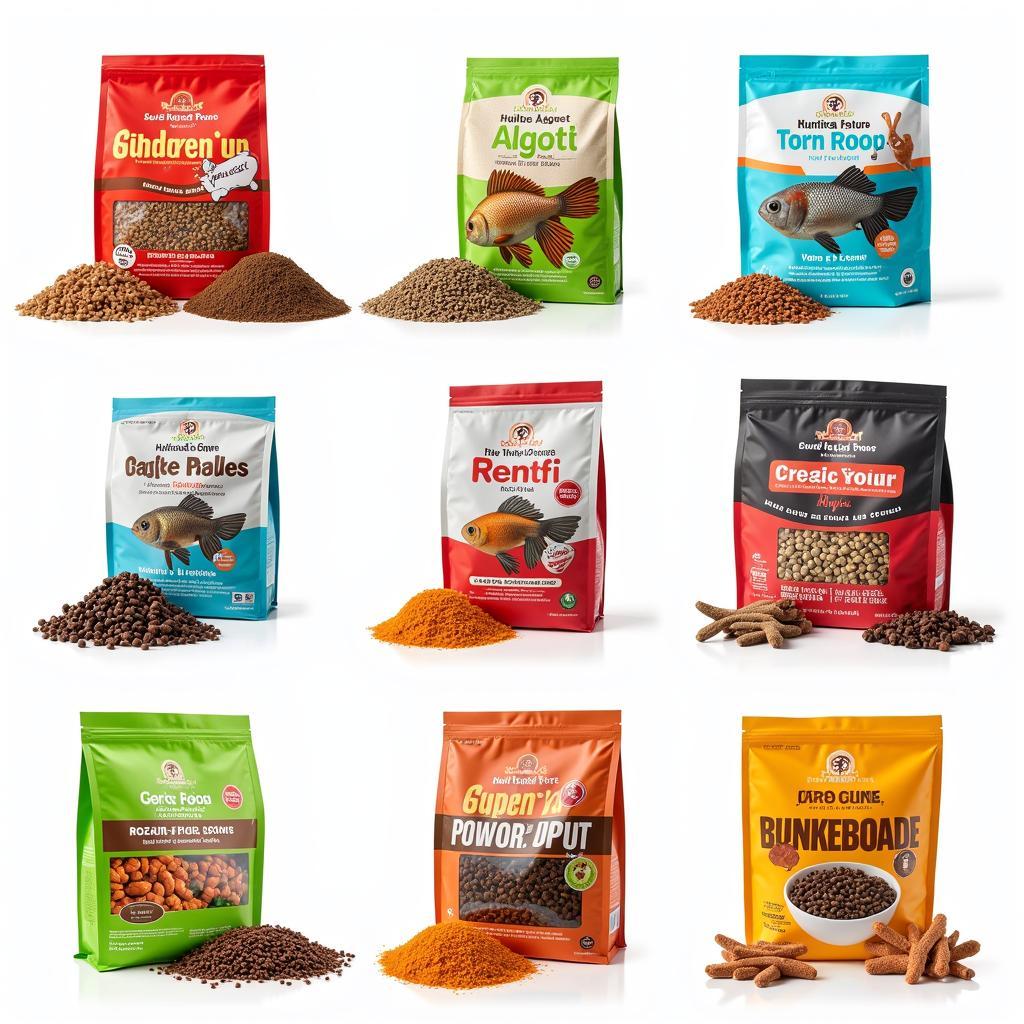Hydro Pets Food is a crucial aspect of keeping our finned friends healthy and thriving. Whether you’re a seasoned aquarist or just starting out, understanding the nuances of aquatic nutrition can make all the difference in the vibrancy and longevity of your underwater companions. This article explores the world of hydro pets food, covering everything from basic nutritional needs to specialized diets.
 Different Types of Hydro Pets Food
Different Types of Hydro Pets Food
Understanding the Basics of Hydro Pets Food
Just like land-dwelling pets, aquatic animals require a balanced diet to support their growth, immune system, and overall well-being. However, the nutritional needs of fish, amphibians, and invertebrates vary significantly depending on their species, age, and environment. Providing the correct hydro pets food is essential for preventing nutritional deficiencies, which can lead to diseases, stunted growth, and even death. For instance, some herbivorous fish require a diet rich in plant-based matter, while carnivorous species need a higher protein intake.
Choosing the Right Hydro Pets Food for Your Aquatic Pets
With so many options available, selecting the right hydro pets food can be daunting. Factors to consider include the type of aquatic pet you have, their dietary requirements, and their feeding habits. For example, bottom-feeding fish require sinking pellets, while surface dwellers prefer floating flakes. Additionally, the size and age of your pet should also influence your choice of food. Juvenile fish require smaller, more frequent meals compared to adult fish.
What are the Different Types of Hydro Pets Food?
Hydro pets food comes in a wide variety of forms, each with its own advantages and disadvantages. Common types include flakes, pellets, frozen foods, and live foods. Flakes are a popular choice for many fish species due to their convenience and affordability. Pellets offer a more concentrated form of nutrition and are less likely to cloud the water. Frozen foods, such as bloodworms and brine shrimp, provide a nutritious and palatable treat, while live foods offer the most natural form of nutrition.
Feeding Schedules and Portion Control for Hydro Pets
Establishing a consistent feeding schedule is essential for maintaining the health of your aquatic pets. Most fish benefit from being fed once or twice a day. Overfeeding can lead to water quality issues and health problems, while underfeeding can result in malnutrition. It’s crucial to provide only the amount of food that your pets can consume within a few minutes.
how to remove food colouring from carpet
How Much Should I Feed My Hydro Pets?
The appropriate portion size depends on the species, size, and activity level of your aquatic pets. Observe their feeding behavior and adjust the amount accordingly. If food remains uneaten after a few minutes, it’s likely you’re overfeeding.
“Overfeeding is a common mistake among aquarists,” says Dr. Amelia Rivers, a renowned aquatic veterinarian. “It can lead to a buildup of waste products in the tank, which can be detrimental to the health of your aquatic pets.”
Maintaining Water Quality and Hydro Pets Food
Uneaten hydro pets food can contribute to poor water quality, which can stress your aquatic pets and make them more susceptible to disease. Regular water changes and proper filtration are essential for maintaining a healthy aquatic environment.
how to get food color out of carpet
How Can I Prevent Uneaten Food from Affecting Water Quality?
Removing uneaten food promptly can significantly improve water quality. Using a fish net or a gravel vacuum can help remove any leftover food from the tank.
“Maintaining a clean tank is paramount for the well-being of your aquatic pets,” adds Dr. Rivers. “Regular cleaning and proper filtration are essential for preventing diseases and promoting a healthy environment.”
Conclusion: Nourishing Your Aquatic Companions with the Right Hydro Pets Food
Choosing the right hydro pets food and establishing a proper feeding regimen are crucial for maintaining the health and well-being of your aquatic companions. By understanding their nutritional needs and providing a balanced diet, you can ensure that your finned friends thrive in their aquatic environment. Remember to consider factors such as species, age, and feeding habits when selecting hydro pets food. A healthy diet contributes significantly to the vibrant colors, active behavior, and overall longevity of your aquatic pets.
vet life gastrointestinal cat food
FAQ
- How often should I feed my fish?
- What are the signs of overfeeding?
- Can I feed my fish human food?
- How do I store hydro pets food?
- What is the best type of food for my specific fish species?
- How can I tell if my fish are getting enough nutrients?
- What should I do if my fish refuses to eat?
When you need help, please contact us at Phone Number: 02437655121, Email: minacones@gmail.com, or visit us at: 3PGH+8R9, ĐT70A, thôn Trung, Bắc Từ Liêm, Hà Nội, Việt Nam. We have a 24/7 customer service team.